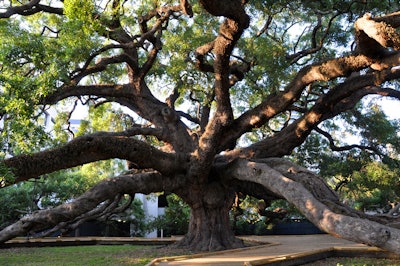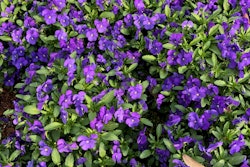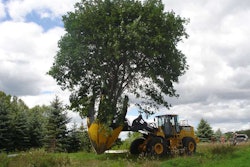 The Treaty Oak is a Southern live oak in Jacksonville, Florida. The tree is estimated to be 250 years old.
The Treaty Oak is a Southern live oak in Jacksonville, Florida. The tree is estimated to be 250 years old.Photo: Wikipedia
Historic trees have been witness to some of the greatest – and sometimes infamous – world events. Their grandeur provides us a living link to the past that can be truly awe-inspiring.
“Dendrochronologists can look at a core or ring sample and tell about world events: droughts, fires, warm years, cold years,” says Judson Scott, registered consulting arborist and president of the American Society of Consulting Arborists.
“In this sense, trees are like people,” adds Scott, who also is president of Vine & Branch Inc., an arboricultural and horticultural consulting and contracting firm in Carmel, Indiana. “Some have been neglected, abused, pampered, ignored, loved, hated; and like our elderly, they have a story to tell. While we honor every tree is historic, what makes some stellar is the story they have to tell. The more a tree has witnessed, the better its story.”
In 1917, American Forests began recognizing the importance of compiling a registry by researching and documenting trees that witnessed history. Its collection has grown to more than 2,000 historic trees; many worthy trees are still unrecognized.
If your client has a tree that you think has potential to be added to the register, look to local tree organizations for an application. And even if the tree doesn’t qualify to be on the register, it may qualify for designation as a significant tree, which are trees selected as outstanding and, therefore, deserving of recognition and protection due to either their rarity, age or historical importance. Many cities and states have lists.
Keep maintenance basic
To preserve historic trees, the Bowling Green Tree Commission in Ohio recommends a maintenance program that focuses on three integral components: soil compaction, soil pH and tree nutrition.
- Soil compaction. Tree roots need water and oxygen to survive. But when soil is compacted, it prohibits the free movement of both of these elements. As drainage improves, water can move through the soil, pulling oxygen through. So aerating around trees to relieve compaction is an important component to preservation. Putting mulch around the tree can help direct traffic around the tree, lessening compaction.
- Soil pH. Soil pH can impact older trees and trees especially sensitive to it, such as oaks. Because of the volume of soil, this can be hard to manage. Plus, other factors will influence the pH level, including your irrigation water. Take a pH sample of the soil surrounding the tree and have it analyzed by a reputable lab. Commercial and university test labs accurately determine pH values for many different soils over a range of pH values. They also provide meaningful lime recommendations for acidic soils.
- Tree nutrition. As trees mature, their roots eventually stop growing, limiting access to new nutrition. Aerate around the tree or drill holes around it up to 1 foot deep. Use a fertilizer that has equal parts of nitrogen-phosphorus-potassium at a rate of 1 pound fertilizer per inch of trunk diameter. Extend fertilizer application as far out as the drip line. Remove dead limbs as needed, and water 1 inch per week in times of drought. For more serious problems, Scott recommends collaborating with a professional arborist, which can be can be found at www.treesaregood.com and consulting arborists at www.asca-consultants.org.
If your client is wondering what are some of the criteria that make a tree historic, share the following with them:
- At or near the tree, an event occurred that affected the lives of the citizens of the day, nationally or regionally. Example: When the Stamp Act was repealed in 1766, jubilant citizens planted sycamore trees at Princeton, New Jersey. The trees are on the campus of Princeton University.
- The tree stands at the home of a person who played a role in the nation’s development or is notable for writing, invention, life’s work or other significant contribution. Example: A huge Osage orange tree shades Patrick Henry’s home at Red Hill, Virginia.
- The tree was planted by an individual or group whose experience is of national, regional or local significance. Example: More than 12,000 cottonwood trees were planted at Fort Sumner, New Mexico, by Navajo-Apache men who were forced into labor.
- The tree is depicted in sketches, journals, photographs, writings or other primary documents related to a historical event. Example: Photographs taken in 1863 of Trostle’s Farm at Gettysburg, Pennsylvania, where Captain John Bigelow issued his soldiers their orders, show a mature swamp white oak tree.
- The tree is figurative in legend, lore or common perception. Example: On the south bank of the St. Johns River in Jacksonville, Florida, a massive live oak tree is considered the legendary site of treaty negotiations between Native Americans and settlers.










